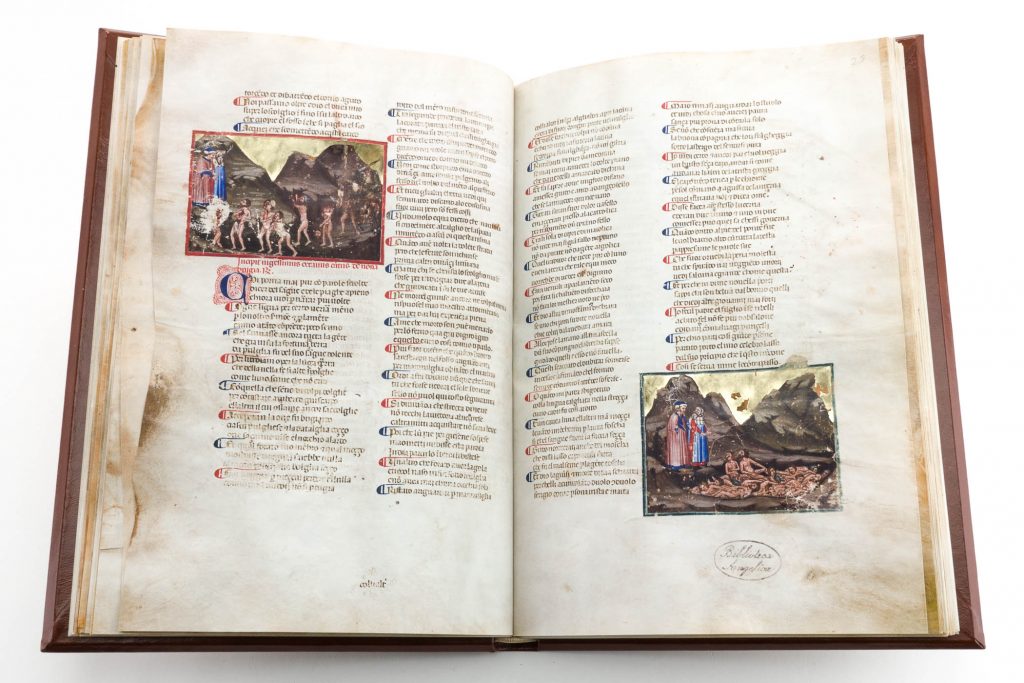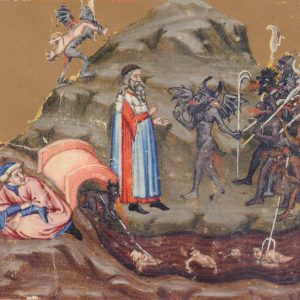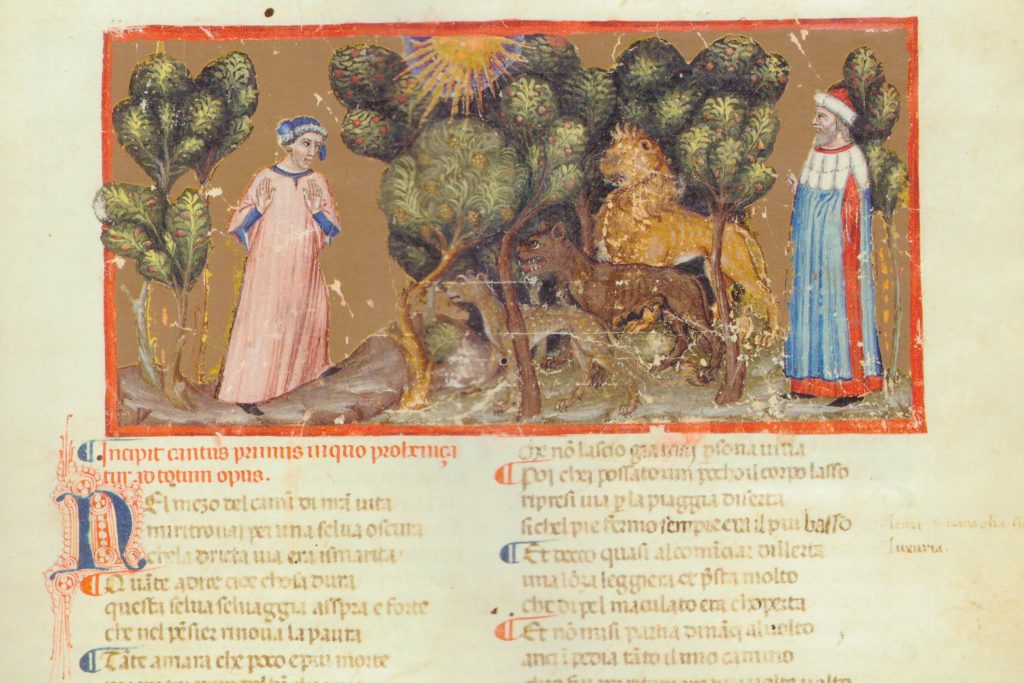Fans of Dante’s Divine Comedy, we have little treat for you: enjoy this short reading about the Ms. 1002 held in the Biblioteca Angelica.
The manuscript conserved at Biblioteca Angelica in Rome (ms. 1102) is clearly one of the most problematic exemplars of the many versions of the Divine Comedy illustrated over the course of the fourteenth century. Not so much because the decoration remained essentially unfinished and limited to the first canticle, but more because it doesn’t give us anything to go on in reconstructing its remote history and original commission.


The quality of the ambitious decoration project, however, allows one to imagine that the work might be connected to a prominent figure, as confirmed by the abundant gold leaf characterising the background of every single miniature. Perhaps the arm of its originai commissioner was actually planned at the beginning in the bas de page at the opening of the first canto or in a separate title-page, as in so many other copies of the same text by Dante. And perhaps it never happened because the work on the decoration was interrupted for some unknown reason.

As evidenced in the facsimile just released by the Rimini-based publishing house Imago. The manuscript has just 34 tabular miniatures all of which are placed at the beginning of the individual cantos of the Inferno (Hell). The spaces for the miniatures in the other two canticles are left open, which is a clear sign the original decoration was meant to include Dante’s whole poem and was to have included at least 200 illustrations.
Those that have come down to us, which were probably made by two different artists, reveal an in-depth understanding of the entire work, to the point of allowing us to believe that the decorative choices may have been made by someone quite well-versed in Dante’s poetry and its many commentaries.
Article written by Massimo Medico for Alumina – Pagine Miniate.
Order your subscription to Alumina today!





